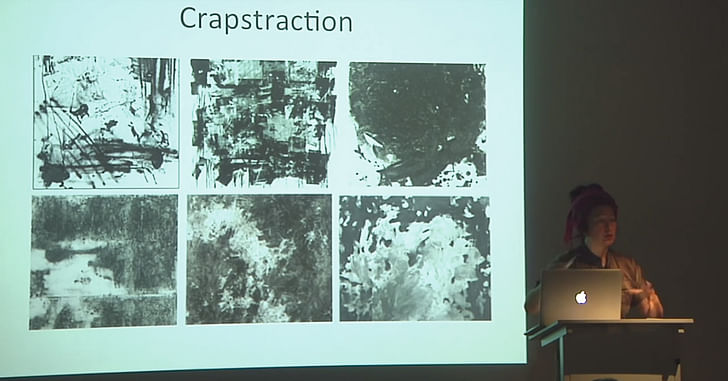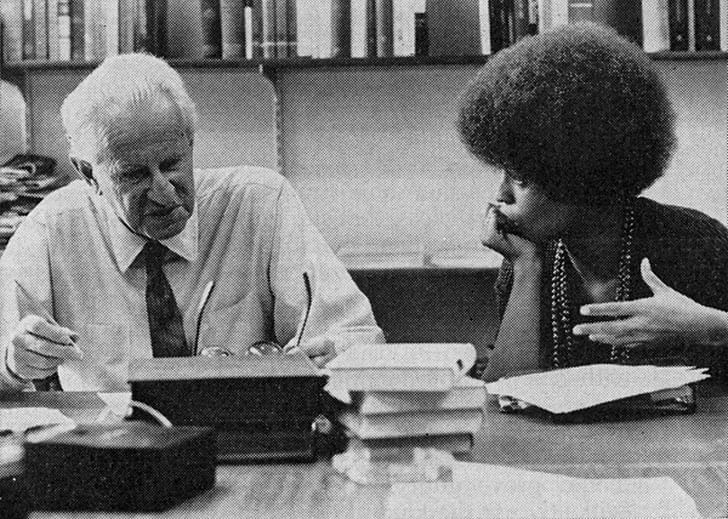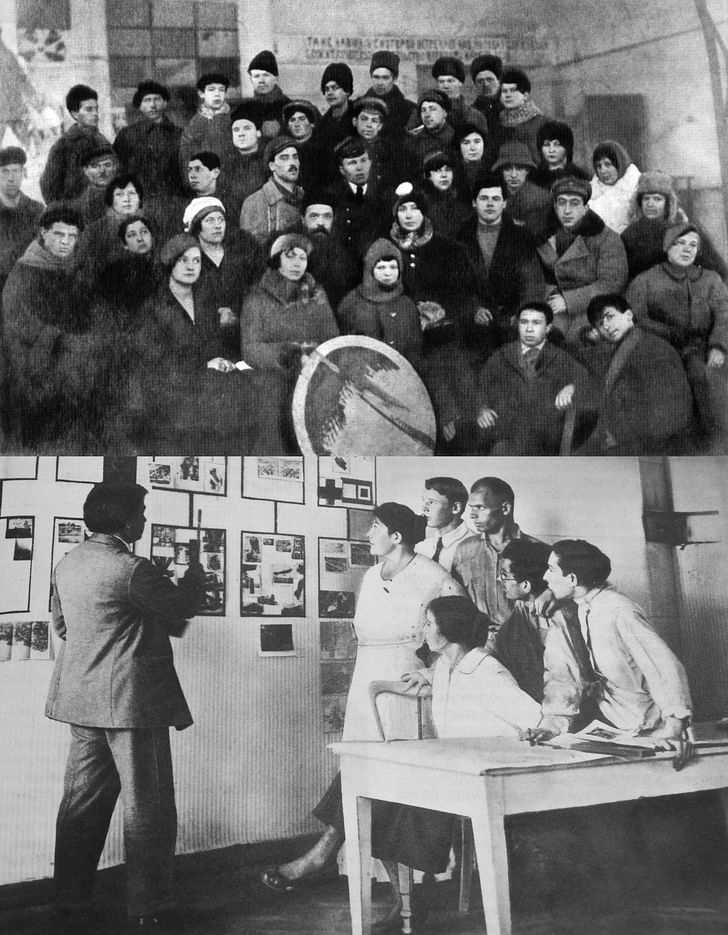

The role of Archinect’s series Cross-Talk is to bring forward the positive aspects of the polemic and allow for the resulting conflict to bring to life an otherwise still and comfortable climate of creativity—if there can be one. Cross-Talk attempts—if to only say that it did—to allow text the freedom that the image has accepted and embraced. Cross-Talk attempts to force the no, to contradict itself, to anger, to please and then anger again, if only to force a stance, to pull out the position of the self, of the discipline and of the hour as a means to begin and maintain conversations moving forward.
In this series, we are looking at the role Practice and Academia in today's disciplinary framework and how we can begin to analyze and recalibrate their relationship. In today's installment we hear from WAI Architecture Think Tank. WAI Architecture Think Tank is an international studio practicing architecture, urbanism, and architectural research. Founded in Brussels in 2008 by French architect Nathalie Frankowski and Puerto Rican architect Cruz Garcia.
How does the NSA distills patters from randomly collected data? Crapstraction? How are academic ranking scores calculated? Crapstraction? How does Google know whether you’re a robot or not? How does contemporary biology, economics, computational science, social network analysis, art investment consultancy, how do all of these come up with patterns, and risk analysis, and reputation scores? Is this maybe Crapstraction?
-Hito Steyerl
We alone was the face of our Time. Through us the horn of time blows in the art of the world. The past is too tight. The Academy and Pushkin are less intelligible than hieroglyphics. Throw Pushkin, Dostoevsky, Tolstoy, etc., etc. overboard from the Ship of Modernity. He who does not forget his first love will not recognize his last.
-David Burliuk, Alexander Kruchenykh, Vladmir Mayakovsky, Victor Khlebnikov, A Slap in the Face of Public Taste (1917)
Every word that is spoken and sung here (…) represents at least this one thing: that this humiliating age has not succeeded in winning our respect.
-Hugo Ball
Avant-Garde
Since the invention of Modernisms, Architectural practice and academia have become inseparable. There is no academia without practice. There is no practice without academia. Architectural pedagogy is at its best when it fosters new ways to practice architecture. Architectural practice is the most transcendental when it retains the burning desire of the most utopian of architecture students. Academia is at its peak when it nurtures avant-garde practices. Architectural practice is the most powerful when it inspires the drive of avant-garde students.
Just like the University Campus is an idealized territory for the inclusive, diverse, open exchange of knowledge, an ideal pedagogical architectural institution anchors in this exchange to learn from the past, and push towards a better future while dealing with the present. The ideal architecture school is the one that foments the multiple ways of doing architecture (in its multiple manifestations) by developing ways not only to think and dream about architecture but to question and explore its potential and limitations. Without a utopian drive (an irresistible desire to make the world a better, more inclusive, more diverse place), there is no truly architectural education.

Standing on the jagged edge of time, the avant-garde best represents this dichotomy between doing architecture and learning about architecture. In their radical search for a new beginning, El Lissitzky, Malevich, Leonidov, Tatlin, Rodchenko, Popova, Ekster, and Stepanova blur through the Vhkutemas the boundary between thinking, and constructing, between speculating and executing. The questions raised in the October revolution in its search to rip apart from the bourgeoisie the means of production found (momentary) manifestation in the fulcrum between academic formation and practical application. Vhkutemas (in a much more efficient, ambitious and inclusive way than the Bauhaus) set to outline a blueprint for an architecture of emancipation. An architecture as a tool for the empowerment of the people around the world.
Academia can be like a block of reinforced concrete: immovable, inert, without any sign of life. In its white and masculine homogeneity, architecture has resisted the winds of change with an arrogant nonchalance as if backed by millennia of hierarchical lobsters and hysterical (a Freudian slip) clinical psychologists.
In the midst of ecological decay (to the point of no return), and deteriorating social conditions, the theory of collapsology paints once again a menacing polemic about unhinged-anger-desire as a driving force for learning the tools to be able to practice a transcendental form of architecture. If what previous generations have provided is not enough to face pressing environmental, social, and technological challenges, isn’t utopia (as the philosophical pursuit of an idealized no-place) after all the ultimate ‘practical’ way to stay critical, poised, focused? Can gargantuan looming threats be dealt with approaches other than colossal? Rather than an expired state to look at from the safe distance of retrospective history, isn’t the condition of being avant-garde a necessity in these times of extreme peril and unprecedented neglect? Never before was information so easily available yet so little was done about it. In the age of information overflow, today’s architecture is the most indifferent form of architecture.

Status Quo
Just like all architectural practices are different, all academic projects are not the same. With tuition-free universities around the world (from Africa, to Latin America, Asia, and Europe) under capitalist threat, the American Model of higher learning is one of the worst examples of inaccessible education. With Education (at every level) turned into a model of exploitation (of human and material capital) in accelerated state, it takes just a few seconds of scrutiny to realize how this materializes into homogeneous, diversity-starved, architectural havens for the consolidation of the status quo. Architecture, the discipline responsible with the task of imagining better ways to live together can’t even formulate ways to study together, let alone practice together.
Academia can be like a block of reinforced concrete: immovable, inert, without any sign of life. In its white and masculine homogeneity, architecture has resisted the winds of change with an arrogant nonchalance as if backed by millennia of hierarchical lobsters and hysterical (a Freudian slip) clinical psychologists. Even the latest #Metoo takeover with its threat to take over the halls of schools of serious gravitas bounced back from the ideological walls and melted into the thin, immaterial air of the internet. Because of its lack of a critical voice, as currently structured Architecture is incapable of coming up with a Black Lives Matter. Just like Architecture didn’t join Civil Rights Movement, or barely touches issues of the LGBT+ community or deals with ableism further than requirement codes. Architectural institutions worldwide are complicit when they condone Nazis like Philip Johnshon, proto-fascists like Zaha Hadid’s business heir, or protect the overlords of sexist elitism. If not aware of its own power structures Academia acts as the quintessential bastion for the defense of hegemonic powers. If not critical of its own condition, Academia can turn into (or remain as) the white marble fortress for the privileged.
If a theory becomes critical (as opposed to traditional theory) to the extent that it employs its tools and strategies to pursue human emancipation from slavery (and the systems that enslave humans), architecture (as education and practice) can only be critical when it can fulfill that search for human liberation. If criticality is the goal of an architecture capable of changing lives and reformulating human relationship with the environment and with other species, an uncritical architecture is just a machine that perpetuates current power relations, from the tenured professor with nothing to contribute to the discipline, to the eager practitioner that hates innovation and that would happily design a segment of a nonsensical wall or the headquarters of the ministry of Truth for the government of Big Brother.

How can architectural pedagogy foment critical forms of practice when students are restrained by piling mountains of multibillionaire debt? How can the architects of the future question the violence of neoliberal capitalism when they have been silenced, extorted, forced into a machine that makes difference and diversity (of positions, backgrounds, experiences) virtually impossible? How can mediocre programs and practices of bland, uncritical, uninspiring architecture lift humanity from the worst menaces of these times? How can architectural education and practice find true critical essence beyond the insipid slogans of sustainable (green washing), evidence based (lack of any hint of design talent), parametric (erotization of machine relations), post-digital (a lazy term for wannabe Hockneyesque renders) nostalgia? How can the future avant-garde transcend teachers that fearing to be outshined, outsmarted, and outlived by their students will do everything possible to truncate any spark of creativity, any sign of character, any free access to knowledge? How can architecture address the sublime questions about life, when architecture cannot even address the real, quantifiable, observable challenges of architecture? How can architecture design for everybody, when most people cannot even dream of architecture?
How can the future avant-garde transcend teachers that fearing to be outshined, outsmarted, and outlived by their students will do everything possible to truncate any spark of creativity, any sign of character, any free access to knowledge?
Is the post-colonial, post-hegemonic education of an architect possible under current circumstances? Can a truly critical, avant-garde resurface from the debris of colonial, hegemonic academic and professional structures? While these oxygen deprived environments asphyxiate, the question that remains is if an avant-garde could live among the dead bodies of architecture? Isn’t Architecture dead every time that academia with its outdated curriculum and unmovable bureaucracy emulates, reinforces and consolidates the status quo of mediocre architectural practices? Isn’t Architecture in a state of rigor mortis every time soulless, frivolous, unambitious, uncritical practices (and teachers) turn academia into a factory to replicate the status quo?
Power
There are many paths to reach architecture. Academia may be just one of them. There is much more (critical) architecture on the installations of Ilya and Emilia Kabakov, Elmgreen and Dragset, and Olafur Eliasson, in the simulacra of Harun Farocki and Hito Steyerl, than in the LEED-certified corporate skyscrapers, prisons, hospitals and charter schools on this or that website, recipient of this or that architectural award. The journey to intellectual curiosity, material and programmatic experimentation can be approached from an endless panorama. Architecture exists beyond and despite degrees or professional certifications. The education of an architect cannot be restrained to the lecture halls of institutions.
As attested by Vkhutemas in the 1920’s and a few other experimental institutions during certain periods of time (Black Mountain College in the 1930’s, the AA in the 1960’s and 70’s), you can teach craft, media, history, methods, processes and strategies of representation, but you can’t teach architecture. The best architectural education is not the one that pretends to hold a truth, or the one that treats students like clients, or the one that fakes to teach how to “think like a designer”, or the one that makes the most trendy Instagram posts, or the one that gets the most student awards, or the one that uses its economic influence to place students in “good” offices, but the one that cultivates sensibility towards the natural and human made environment, the one that reveals a world of diverse cultural productions, the one that can provide a holistic pedagogical experience within the circumstances without restricting students with unsurmountable debts, the one that exposes a world of anthropological differences and similitudes, the one that questions the limits and challenges of architecture and its social, cultural, political, symbolic, and environmental imperatives.

Contrary to what mass media today would like you to believe, a real and critical architectural education –like practice—is indifferent to awards, and rankings, to Facebook likes and Instagram reposts. The data ‘crunched’ by algorithms to speculate on a formula for architectural success in practice and education is closer to the concept of ‘Crapstraction’ than to architecture. Crapstraction, a term Hito Steyerl borrowed from art-critic Jerry Saltz to speak about a certain aesthetic derived from the similitude of correlations and patterns is as she calls it: ‘the key ontological formula of our times: art is what your friends buy.” Architectural crapstraction then, is the concept of a successful, famous, good architecture (practice or school) that derives from algorithmic consensus, from the collective approval of the status quo. Even if it may look or pose as critical, in the end, architectural crapstraction in its multiple manifestations is the opposite of a truly critical architectural avant-garde.
A critical architecture will have to be prepared to be challenged and succeeded by new forms of avant-garde, and be thrown down the ship of modernity like Mayakovsky promised to do with the Tolstoys and Dostoyevskys.
There’s a reason why a great number of architects working all around the world studied at their local schools wherever they come from. Accessible and affordable educational systems can be the ones with the bigger impact on their societies. It’s not a coincidence that Alvaro Siza graduated from the University of Porto, Solano Benitez from the National University of Asuncion, Oscar Niemeyer from the Federal University of Rio de Janeiro, Carme Pinos from Escuela Técnica Superior de Arquitectura de Barcelona, Carme Pigem from Escuela Técnica Superior de Arquitectura del vallés, Anne Lacaton from École nationale supérieure d'architecture et de paysage de Bordeaux, and Sofia von Ellrichshausen from Universidad de Buenos Aires. Despite all its promises, no academia has a formula for architecture. No architectural school holds the key to the really ‘transcendental’ questions of the future, no institutions can promise that it will educate truly critical or avant-garde architects unless it is truly reaching to the parts of society that have been excluded up until now.
What is to be done?
In order to face the urgent questions of the future, architecture in practice and academia will have to go where it hasn’t gone before. In its critical drive, architecture has to believe (again) that it can make a change, contribute to society, and change the world. Academia and practice have to rely on an unprecedented generosity of knowledge, where every architectural project (from the little manifesto to the casted column) questions and exposes the problematic legacy of architecture and its relationship with power. They will have to be curious and adventurous (to look where it’s uncomfortable to look) and welcoming (when inviting those who are not part of the club). A truly critical architectural education will have to challenge not only the ways to narrate history, but the systems where these narrations take place. A critical architecture will have to be prepared to be challenged and succeeded by new forms of avant-garde, and be thrown down the ship of modernity like Mayakovsky promised to do with the Tolstoys and Dostoyevskys. A new form of critical education will learn for the gospels of Victory Over The Sun and dream of humans capacity to perform radical transformations of the environment. This critical architecture will dream of futures in unselfish ways, futures that as author Luis Othoniel Rosa mentions, don’t include us. Futures for the other. Futures for the neglected. For the ones we don’t even know.

The future of critical architecture will have to learn from the events at the University of Frankfurt surrounding Theodor W. Adorno. In April 1969, Adorno, that through his ‘Negative Dialectics’ aimed to develop a critical theory for human emancipation, was confronted by three female sociology students that through an act of ‘Planned Tenderness’ or “breast action” (Busenaktion) challenged the teacher’s reluctance to engage in activism and real physical interventions. Trying to protect himself with his briefcase from the erotic pantomimes, the naked breasts and the rose and tulip petals sprinkled over him, he left and never returned to lecture. A truly critical architecture will be empowered both by critical theoretical positions and by provocative action. Critical Architecture will blur the boundaries between practice and education as it turns the pantomimes, naked provocations and rose petals into kynical narratives and critical subversions of the status quo. New forms of critical architecture will seek the truly fundamental questions affecting the world today questioning all the manifestations of crapstaction and expanding the limits of the architectural world to realms never reached before. Radical forms of critical architectural education and practice will lift the Diogenesian lantern under plain daylight in search for an honest and fair architecture.
--
The text contains elements from Peter Sloterdijk Critique of Cynical Reason, several lectures by Hito Steyerl, references by Sophie Salamon and concepts out of discussions with Luis Othoniel Rosa.
1 Comment
a time long long ago
(in what we now label indigenous architecture)
practice/academia were one.
consumer-oriented culture
that is concerned about authors and labels of authenticity
indigenous culture
that is producer-oriented looked to the relevance and usability of items
concerns itself not with authors and labels of authenticity
and just maybe we call experience and enjoy will all our senses again.
the industrial age of the past has come to pass
i don’t know is there needs to be anger in what we are not
rather be aware and celebrate who we are
“for what is meant by the irrational and the non-logical in much modern discussion
is merely the rediscovery of the ordinary transactions
between the self and the world,
or between subject and object.”
thanks for voicing the issues i(& friends) experience.
Block this user
Are you sure you want to block this user and hide all related comments throughout the site?
Archinect
This is your first comment on Archinect. Your comment will be visible once approved.